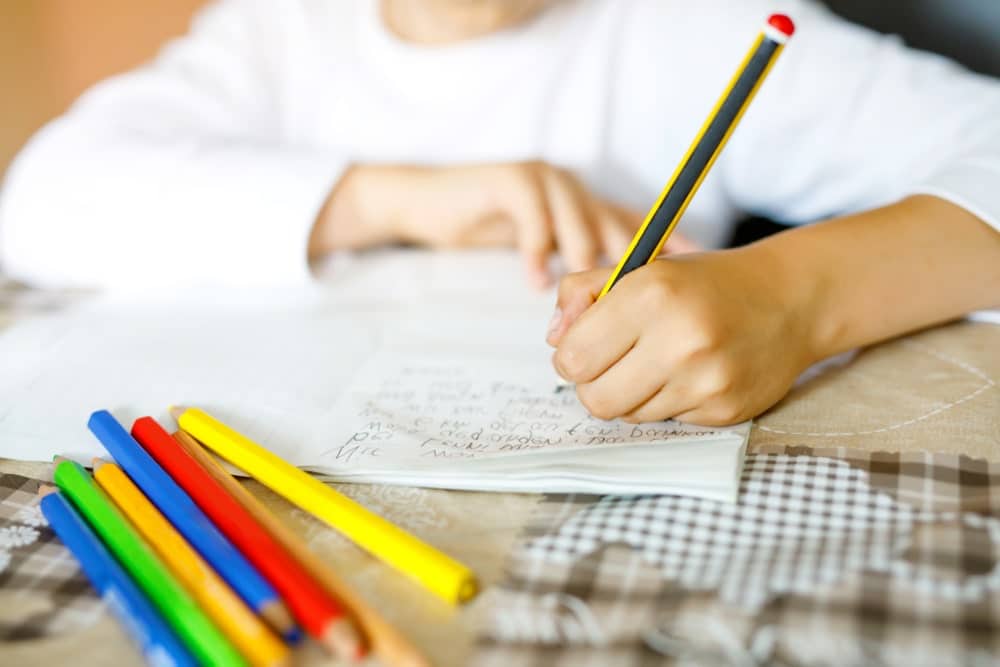
Pie Corbett
Author
Pie Corbett is an author, poet, literacy expert and creator of the renowned Talk for Writing approach to learning. You can find his Story Writing Boxes for KS1 and KS2 on the Hope Education website.
I was one of five boys and during the first six years of my life, we lived at the end of a terrace cottage in a small village. It was a two-up, two-down with an outside toilet and the bath was a tin tub. In the summer, this was filled with water and my two older brothers and I splashed around in the backyard. Initially, we were not on mains water, so we staggered across the road to the water pump with huge buckets.
We had none of the nick-nacks and stuff that most us have spread around their house nowadays. There were no piles of newspapers or magazines. No books. No toys. Nothing. The front room was always cold and damp. It had green furniture and was reserved for when ‘special visitors’ came round. The trouble was that we seemed to never have visitors so the room was never used. It was always dark and damp.
I remember the kitchen best. On the table, there was a radio that glowed. We had some sort of rayburn or aga. I know this because in the snow, when it was bitterly cold, I can remember that my mother sat me on the floor with my feet in the lowest oven. At the back of the cottage, there was a toilet right at the end of the yard. It was dark and spiders lived there.
Childhood stories
At this point in our lives, my parents were poor but we had riches beyond belief – because we had stories. Every day, we would settle down in the kitchen at about 2 o’clock and the lady’s voice on the radio asked, “are you sitting comfortably, then I’ll begin.” The radio programme ‘Listen with Mother’ provided a daily story. In the winter, I would sit on the kitchen floor with my feet stuck in the bottom oven, warming my toes, sucking my thumb and listening to the radio. Every night, we were read a story. Whilst there were no books in the house, we were taken to the library. It is hard to imagine how thrilling it was to come out clutching a hard-backed book… all for free!
At this point in our lives, my parents were poor but we had riches beyond belief – because we had stories.
Our parents sung nursery rhymes to us; my Dad told us stories. Some of these were traditional tales – he used to tell a terrifying version of ‘The Hobyahs’ but he also invented stories. There was an on-going saga that featured a useless detective called Bracegirlde Bathwater who endlessly battled against his deadly enemy, Moriarty. Around the kitchen table, there was an endless sea of talk. Indeed, sometimes it seemed as if everyone was talking at once!
From an early age, I caught a love of reading and poetry from my home. It was a comfort then and remain so now. As I grew up our fortunes changed, diving and dipping, but story and poetry were a constant. Even now, I find it hard to sleep unless I have settled my mind with a bedtime story.
Sometimes, when I am on a distant railway station in the wintry rain, late at night, waiting for a connection, I wonder what on earth I am doing criss-crossing the country when I could be safe and warm at home. I know why. It is so that others can have their inner world awakened and cherished. So that the world of creativity can help children and teachers find within themselves that which they never knew existed. To create is to say, ‘hello, here I am’. Creation allows us to be more than what we thought we were. It helps us to stand tall and to be strong. To be whomsoever we would like to be. We can always retell our own story. And of course, the opposite of creation is destruction.
The power of stories in education
The creative teacher takes risks and dares to experiment. For children to write creatively, basic skills such as spelling and handwriting have to become automatic so that the young writer’s intelligence can focus upon generating and crafting language; so that the writer can listen to what lies within; so that ideas rise up unfettered. It can elevate teaching from a craft into becoming an art.

Poems and stories are of some magical benefit and wonder. I still believe that. The difference is that now, I understand so much more about why this might be so and how schools can establish story and poetry at the heart of their work with children and parents so that others can have their inner world developed and their language grown.
My encounters with stories and their power grew over time. Of course, the power of reading to children I discovered on teaching practice. Anyone who has had the experience of reading to children will know that it is something special. That moment, when you glance up and 35 pairs of eyes are staring at you and beyond you into their own collective story.
Over the years, storytelling became part of my repertoire as a teacher. I read stories and told them. The daily class reader was sacrosanct and each year I would spend hours trying to find great stories, written with elegance, that I could share with the children. I never opted for third best or the quick laugh. In the end, this lead into my belief that schools should agree upon a core of picture books and novels that would be shared with the children each year so that children experienced classic literature. By ‘classic’ I mean the great children’s books of the last 50 years or so – Tom’s Midnight Garden, The Midnight Fox, The Iron Man, Skellig, etc.
Story telling was especially addictive – both for the children and for me as the teller. You cut out the middle man and are left with the direct link between teller, tale and listener. Many times, I would tell a tale about a flying horse or an ogre and a child would ask, ‘is that true?’ Well, of course it was not but in the telling, it felt true.
For children to write creatively, basic skills such as spelling and handwriting have to become automatic so that the young writer’s intelligence can focus upon generating and crafting language
In the same way, I noticed certain children were attracted to key stories. They would ask for them to be told, keep rereading them. Themes would repeat themselves through their writing as if the language and their creation was necessary. And if they could do this well enough then they could move on. The stories helped us meet our fears as well as visiting experiences not yet met. They were there to pass the time of day, to help us escape the moment, as a comfort but also to challenge us. I’ll never forget standing in the darkness of the mountain beside Bilbo and hearing Gollum gulping his way towards us through the darkness… and I was there with 35 children in a small village school. We stood together in the darkness, clutching the ring of power.
Creativity, well-being and culture
Over the years, I realised that story was crucial to the well-being and culture of a class and school. Classes and schools have their own narrative – what they tell themselves they are and their purpose might be. Teachers possess and create a narrative with the class as they move through the year. What does it mean to be a young learner in this class – is this the year in which a child learns that they cannot do maths and is relegated to the ‘slow table’ (where I sat over half a century ago)? Or is this the year in which a skilled and creative teacher taught you how to sing, so you found the voice that you never knew that you possessed? Creative teachers help children create and this can be transformational
We have all been and are still passing through what will hopefully become a unique experience. During the pandemic, children worries will have festered and grown out of proportion, some will have witnessed and experienced arguments, tensions and worse. They will need to come together for the daily soothing balm of narrative, poetry, song, dance, art and all forms of creativity. Everyone will need to talk about what has happened, to write about it, to create and play out stories based around their experiences and concerns.
If creativity is simply about the ability to generate fresh ideas that might be of some use and interest then this has to be a central aim of education. As Ken Robinson has so succinctly and eloquently stated in his famous TED talk the one thing that we know our children starting school today will need in 50 years time, we can be sure that creativity will be necessary for sure.
If schools do not have creativity and the arts at their heart, then they are heartless places. What do we find in every culture? Art, song, dance, religion – and story. It is central to being civilised and should be central to education. Without story our schools are dry as dust.
© Pie Corbett 2020